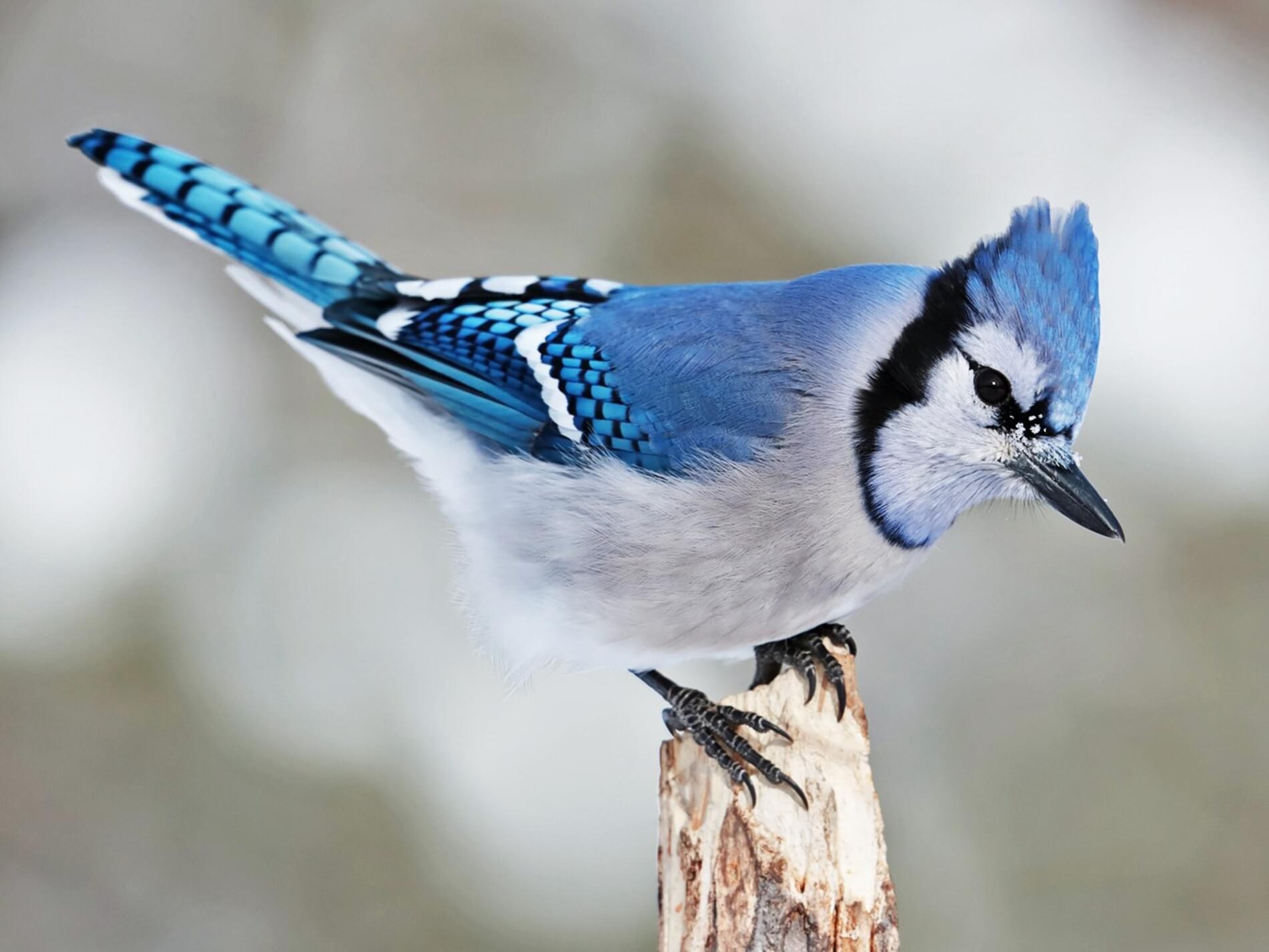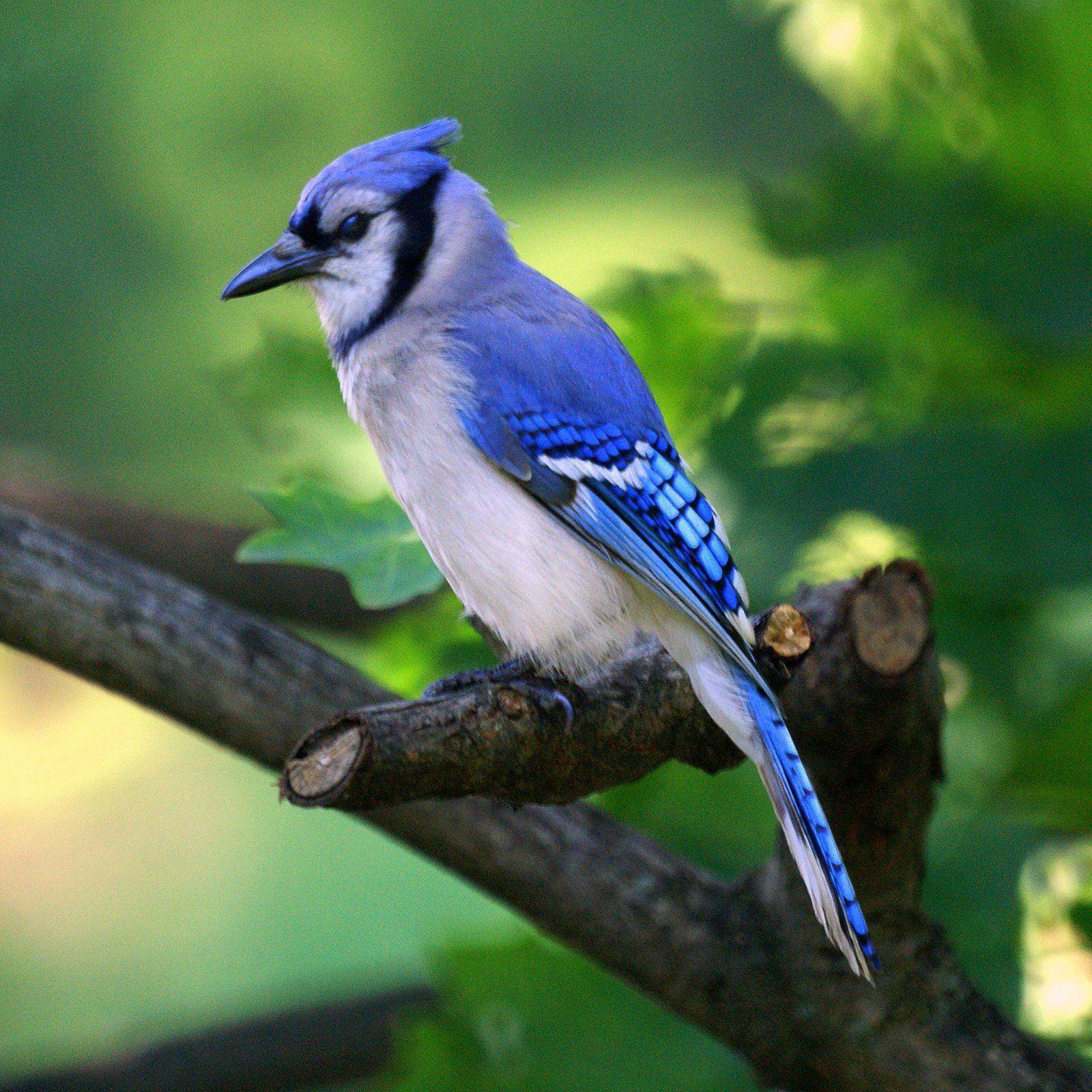Blue Jays

The blue jay, a common and vibrant bird found throughout North America, is a captivating sight with its striking plumage and boisterous calls. These intelligent and adaptable creatures play a significant role in the ecosystem, contributing to the balance of nature. This section delves into the fascinating world of blue jays, exploring their biology, behavior, and ecological importance.
Physical Characteristics
Blue jays are easily recognizable with their distinctive blue, white, and black plumage. They are medium-sized birds, measuring approximately 10-12 inches in length with a wingspan of 16-20 inches. Their most prominent feature is their bright blue crest, which can be raised and lowered depending on their mood or social interactions. The back, wings, and tail are a vibrant blue, while the underside is white with black barring. The face is white with a black mask that extends from the bill to the eyes. Their powerful beak is adapted for cracking seeds and nuts, while their strong legs and sharp claws allow them to perch securely on branches and maneuver through trees.
Diet and Foraging Habits
Blue jays are omnivorous, consuming a diverse range of food items. Their diet primarily consists of seeds, nuts, fruits, insects, and small animals. They are opportunistic feeders, taking advantage of available food sources throughout the year. During the breeding season, they feed their young primarily insects and caterpillars, providing them with the necessary protein for growth. Blue jays are known for their clever foraging techniques, often caching food for later consumption. They store excess food in hidden locations, remembering the precise location for retrieval when food is scarce. This behavior contributes to seed dispersal, as some cached seeds may not be retrieved and can germinate, leading to new plant growth.
Vocalizations and Communication
Blue jays are renowned for their loud and varied vocalizations, which play a crucial role in their communication. They have a complex repertoire of calls, including a harsh “jay” call, a scolding “churr” call, and a series of whistles and clicks. These calls serve various purposes, including alarm calls to warn other jays of predators, territorial defense, and communication during mating rituals. Blue jays also have a distinctive song, a series of whistles and trills that they use to attract mates and defend their territory. Their vocalizations are highly effective in conveying information and coordinating social interactions within their flocks.
Social Behavior and Nesting Habits, Blue jays
Blue jays are highly social birds, often living in flocks throughout the year. They are territorial, defending their nesting sites and feeding areas from rivals. Their social structure is complex, with dominant individuals leading the flock and coordinating group activities. During the breeding season, blue jays form pairs and establish territories. They build their nests in trees, typically high up in the canopy for protection from predators. The nest is a cup-shaped structure made of twigs, leaves, and other materials. The female lays 3-7 eggs, which are incubated for approximately 17 days. Both parents share the responsibility of incubating the eggs and feeding the young.
Ecological Role
Blue jays play a significant role in the ecosystem, contributing to seed dispersal, insect control, and predator warning. Their caching behavior helps to spread seeds throughout the forest, promoting plant diversity. Their diet includes a wide range of insects, helping to control insect populations. Their alarm calls warn other birds of predators, increasing the overall survival rate of the bird community. Blue jays are also known to mimic the calls of other birds, including hawks and owls, which they use to deter predators from their territory.
Blue Jays in Human Culture
The blue jay, with its vibrant plumage and bold personality, has long captivated human imagination, leaving an enduring mark on various cultures around the world. From folklore and mythology to literature, art, and music, the blue jay has inspired countless stories, symbols, and interpretations, reflecting the complex relationship between humans and this fascinating bird.
Cultural Significance
The blue jay holds a prominent place in the folklore and mythology of many cultures. In Native American traditions, the blue jay is often associated with trickery, cleverness, and the ability to communicate with spirits. The Cherokee people believed that the blue jay was a messenger of the gods, while the Ojibwe saw it as a symbol of transformation and renewal.
Depiction in Literature, Art, and Music
The blue jay’s striking appearance and unique call have inspired numerous artists, writers, and musicians. In literature, the blue jay has been used as a symbol of freedom, resilience, and the beauty of nature.
“The blue jay, with its bright plumage and bold personality, is a constant presence in the forests of North America.”
The blue jay’s vibrant colors have also inspired many painters, who have captured its beauty in their works. In music, the blue jay’s call has been used to create evocative soundscapes, reflecting the bird’s playful nature and its connection to the natural world.
Historical Relationship with Humans
The blue jay’s impact on human settlements has been both positive and negative. As omnivores, blue jays play a role in seed dispersal, which can be beneficial for agriculture. However, they can also be considered pests due to their tendency to raid bird feeders and gardens.
Admiration and Fear
The blue jay’s boldness and intelligence have earned it both admiration and fear from humans. While some people appreciate its vibrant colors and its ability to mimic sounds, others find its loud calls and aggressive behavior intimidating.
Cultural Perceptions of the Blue Jay
| Culture | Perception | Examples |
|---|---|---|
| Native American | Messenger of the gods, trickster, symbol of transformation | Cherokee, Ojibwe |
| European | Symbol of freedom, resilience, beauty of nature | Literature, art, music |
| Modern Western | Both admired and feared, symbol of intelligence and aggression | Birdwatching, pest control |
Blue Jays in the Modern World

The blue jay, a vibrant and intelligent bird, faces challenges in the modern world, navigating a landscape shaped by human activity. Understanding the threats they encounter and the conservation efforts underway is crucial for ensuring their continued presence in our ecosystems.
Conservation Status and Threats
The blue jay is classified as a species of “Least Concern” by the International Union for Conservation of Nature (IUCN). This means that while they are not currently facing an immediate threat of extinction, they are still vulnerable to various factors that could negatively impact their populations.
- Habitat Loss and Fragmentation: As urbanization and development encroach upon natural landscapes, blue jay habitat is shrinking and becoming fragmented. This limits their access to food, nesting sites, and territories, impacting their ability to thrive.
- Climate Change: Climate change poses a complex threat to blue jays. Shifting weather patterns, altered food availability, and changes in breeding seasons can disrupt their natural cycles and make it harder for them to adapt.
- Predation and Disease: While blue jays are generally successful predators, they are also susceptible to predation from larger birds of prey and mammals. Diseases like avian pox can also impact their health and survival.
- Pesticide Use: The use of pesticides in agricultural and urban environments can have detrimental effects on blue jays, both through direct poisoning and by reducing their food sources.
Urbanization and Habitat Loss
The expansion of urban areas has a significant impact on blue jay populations. As forests and woodlands are replaced by concrete and asphalt, blue jays lose access to their natural habitats. This leads to reduced food availability, fewer nesting sites, and increased competition for resources.
- Food Scarcity: Blue jays rely on a variety of insects, seeds, and nuts found in forests. Urban environments offer limited natural food sources, forcing blue jays to adapt to human-provided food, which may not be as nutritious.
- Nest Site Competition: Urban areas often lack the tall trees and cavities that blue jays prefer for nesting. This can lead to competition for limited nesting sites and increased vulnerability to predators.
- Increased Stress: The constant noise, light pollution, and human activity in urban areas can stress blue jays, impacting their breeding success and overall health.
Citizen Science and Conservation Efforts
Citizen science plays a vital role in understanding and protecting blue jay populations. By engaging the public in data collection and research, scientists can gain valuable insights into blue jay behavior, distribution, and habitat preferences.
- Birdwatching and Data Collection: Birdwatchers contribute to valuable datasets by recording sightings, nesting locations, and population trends. These data help scientists monitor blue jay populations and identify areas of concern.
- Habitat Restoration and Conservation: Citizen science initiatives can support habitat restoration efforts by planting native trees and shrubs, creating wildlife corridors, and advocating for responsible land management practices.
- Education and Awareness: Citizen scientists can educate the public about the importance of blue jays in the ecosystem and encourage actions that support their conservation.
Resources and Organizations
Several organizations are dedicated to blue jay research and conservation. These resources offer valuable information, research findings, and opportunities to get involved in conservation efforts.
- Cornell Lab of Ornithology: A leading research and education institution focused on bird conservation. Their website provides extensive information on blue jay biology, distribution, and conservation efforts.
- Audubon Society: A national organization dedicated to bird conservation. Their website offers information on blue jays, habitat restoration, and ways to support their work.
- The Nature Conservancy: A global conservation organization that protects ecologically important lands and waters. They have various programs focused on habitat restoration and conservation, including efforts to protect blue jay populations.
Public Awareness Campaign
A public awareness campaign aimed at educating people about the importance of blue jays in the ecosystem could utilize various strategies:
- Social Media Campaigns: Using engaging visuals and informative content, social media campaigns can raise awareness about blue jays and their ecological role.
- Educational Workshops and Presentations: Workshops and presentations can be conducted in schools, community centers, and nature centers to educate people about blue jay biology, conservation, and how to create blue jay-friendly habitats.
- Public Service Announcements: Short, impactful public service announcements on television and radio can raise awareness about the importance of blue jay conservation.
- Partnerships with Local Businesses and Organizations: Collaborating with local businesses and organizations can help spread the message about blue jay conservation through signage, events, and educational materials.
Blue jays are known for their vibrant plumage and raucous calls, often seen flitting through the trees of North America. Their athleticism and agility remind us of the dedication and skill of baseball players like Enyel De Los Santos , a Dominican pitcher who has risen through the ranks with his own impressive pitching prowess.
Like the blue jay, De Los Santos embodies a spirit of resilience and determination, showcasing the power of dedication and hard work on the baseball diamond.
Blue jays, with their vibrant plumage and boisterous calls, are a common sight in many parts of North America. Their striking blue feathers often remind fans of the iconic blue of the kc royals , a team known for its passionate fan base and thrilling games.
Just as the blue jays bring a burst of color to the forest, the Royals bring a vibrant energy to the baseball diamond, captivating fans with their exciting play.

